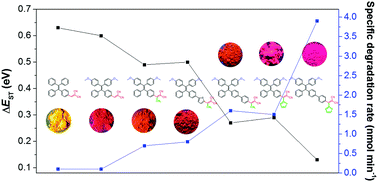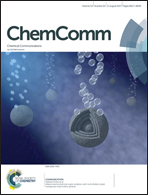Highly efficient photosensitizers with aggregation-induced emission characteristics obtained through precise molecular design†
Abstract
We herein report a new strategy to obtain highly efficient photosensitizers (PSs) by reducing the singlet–triplet energy gap (ΔEST) and blocking the non-radiative decay pathways. Through precise molecular design, TP1–8 were synthesized to exhibit predictable properties including moderate to high photosensitizing efficacy, tunable absorption and emission wavelengths and aggregation-induced emission characteristics.



 Please wait while we load your content...
Please wait while we load your content...